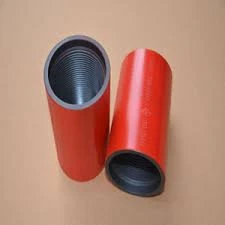- Afrikaans
- Albanian
- Amharic
- Arabic
- Armenian
- Azerbaijani
- Basque
- Belarusian
- Bengali
- Bosnian
- Bulgarian
- Catalan
- Cebuano
- Corsican
- Croatian
- Czech
- Danish
- Dutch
- English
- Esperanto
- Estonian
- Finnish
- French
- Frisian
- Galician
- Georgian
- German
- Greek
- Gujarati
- Haitian Creole
- hausa
- hawaiian
- Hebrew
- Hindi
- Miao
- Hungarian
- Icelandic
- igbo
- Indonesian
- irish
- Italian
- Japanese
- Javanese
- Kannada
- kazakh
- Khmer
- Rwandese
- Korean
- Kurdish
- Kyrgyz
- Lao
- Latin
- Latvian
- Lithuanian
- Luxembourgish
- Macedonian
- Malgashi
- Malay
- Malayalam
- Maltese
- Maori
- Marathi
- Mongolian
- Myanmar
- Nepali
- Norwegian
- Norwegian
- Occitan
- Pashto
- Persian
- Polish
- Portuguese
- Punjabi
- Romanian
- Russian
- Samoan
- Scottish Gaelic
- Serbian
- Sesotho
- Shona
- Sindhi
- Sinhala
- Slovak
- Slovenian
- Somali
- Spanish
- Sundanese
- Swahili
- Swedish
- Tagalog
- Tajik
- Tamil
- Tatar
- Telugu
- Thai
- Turkish
- Turkmen
- Ukrainian
- Urdu
- Uighur
- Uzbek
- Vietnamese
- Welsh
- Bantu
- Yiddish
- Yoruba
- Zulu
api casing sizes
Understanding API Casing Sizes A Comprehensive Overview
The American Petroleum Institute (API) has set forth standardized specifications for casing sizes used in drilling operations. This article aims to elucidate the significance of API casing sizes, their classifications, and how they impact drilling operations and oil extraction.
What is API Casing?
API casing refers to the large-diameter pipes that are used in the construction of oil and gas wells. The primary purpose of casing is to provide structural integrity to the wellbore, prevent the collapse of the well, and protect the surrounding environment from potential contaminants. Casing also facilitates the extraction processes of hydrocarbons by allowing equipment to be run securely into the well.
Importance of Casing Sizes
Casing sizes are crucial for various reasons. First and foremost, they determine the well's ability to withstand high pressures and temperatures encountered during drilling and production. The choice of casing size directly influences the safety and efficiency of drilling operations. A poorly chosen casing size can lead to catastrophic failures, resulting in loss of resources, financial setbacks, and environmental hazards.
API Casing Size Specifications
API casing sizes are expressed in inches, ranging from smaller diameters, such as 4.5 inches, to larger ones, such as 20 inches or more. The specifications include not only the diameter but also the weight and grade of the casing material. Common casing sizes include
1. Surface Casing Usually ranges from 10.5 to 20 inches in diameter. This is the first layer of casing and is set in place to prevent contaminants from entering the groundwater and to protect the well from outside pressures. 2. Intermediate Casing Typically ranging from 7 to 9 inches, this section is installed after the surface casing and serves as a barrier against high-pressure formations that may be encountered during drilling.
api casing sizes

3. Production Casing This casing is usually smaller, around 5 to 7 inches in diameter, and is set up below the intermediate casing. It allows for the assembly of production tubing, which brings hydrocarbons to the surface.
4. Liner Casing This is a type of casing that is not fully anchored at the surface but hangs from a previous casing string. It is useful in reducing material costs and is often deployed in complex well designs.
Grades and Weights
Apart from size, casing pipes are classified by grade and weight. The grade signifies the quality and tensile strength of the material, which directly correlates with its ability to withstand environmental stresses. Common grades include
- J55 A common grade for surface casing, which is suitable for low to medium pressure applications. - N80 Often used for intermediate casing due to its higher tensile strength and durability. - K55 Primarily used in production casings for deeper and more challenging wells, providing enhanced structural integrity. The weight of casing also plays a significant role in its application; heavier casings provide more robustness but can be more challenging to handle during installation.
Selecting the Right Casing Size
Selecting the appropriate API casing size depends on several factors including the depth of the well, the type of formation being drilled, and the specific conditions of the site. Engineers and geologists must work collaboratively to determine the optimal casing size that ensures safety, efficiency, and cost-effectiveness.
Conclusion
Understanding API casing sizes is essential for anyone involved in the oil and gas sector. The right casing size not only ensures the structural integrity of the well but also plays a pivotal role in the overall success of drilling operations. As the industry continues to evolve with advancements in technology and environmental considerations, staying informed about the latest casing specifications and practices will be crucial for professionals in the field. By prioritizing the correct casing choices, operators can enhance both safety and productivity, thus enabling more efficient oil and gas extraction processes.
-
Tubing Pup Joints: Essential Components for Oil and Gas OperationsNewsJul.10,2025
-
Pup Joints: Essential Components for Reliable Drilling OperationsNewsJul.10,2025
-
Pipe Couplings: Connecting Your World EfficientlyNewsJul.10,2025
-
Mastering Oilfield Operations with Quality Tubing and CasingNewsJul.10,2025
-
High-Quality Casing Couplings for Every NeedNewsJul.10,2025
-
Boost Your Drilling Efficiency with Premium Crossover Tools & Seating NipplesNewsJul.10,2025







